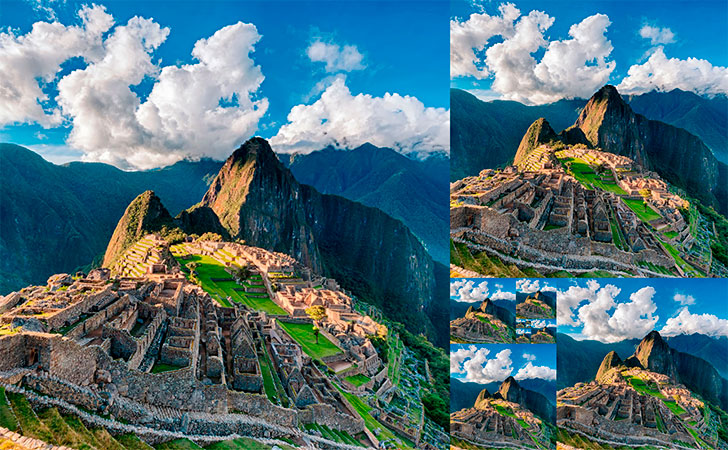|

Machu Picchu's Golden Rectangles Embrace: A View Framed by Mathematical Harmony.
"Machu Picchu is
a late Inca town dramatically sited on the saddle between two
mountains, Machu Picchu (Old Mountain) and Huayna Picchu (Young
Mountain), overlooking the Urubamba River, which winds 3000 ft
below it. Its buildings, all constructed of local stone, use
various types of walling, from coursed ashlar to roughly dressed
rubble, and incorporate characteristic trapezoidal doorways.
Some of the walls have rectangular niches formed on the inner
side. Masonry gables still stand and some buildings have
trapezoidal window openings. The steep slopes of the site are
terraced with masonry retaining walls to hold soil for the
gardens, and the various levels of the town are linked by stone
stairways."
Sir Banister Fletcher. A History of Architecture. p688.
Machu Picchu is a pre-Columbian Inca city located at 7,970 ft
altitude on a mountain ridge above the Urubamba Valley in Peru,
about 44 mi northwest of Cusco. Machu Picchu is the most
familiar symbol of the Inca Empire. It is often referred to as
"The Lost City of the Incas". The site was designated as a World
Heritage Site in 1983 when it was described as "an absolute
masterpiece of architecture and a unique testimony to the Inca
civilization".
Machu Picchu, which means "Old Peak", was probably built by
Pachacuti Inca as a royal estate and religious retreat in
1460-70. The site is comprised of approximately 200 buildings,
most being residences, although there are temples, storage
structures and other public buildings. It has polygonal masonry,
characteristic of the late Inca period.
After centuries lost in the jungle
of Cuzco, Machu Picchu was rediscovered in 1911 by the American
archaeologist Hiram Bingham. The Inca trail to Machu Picchu is
rated as one of the best trekking trails in the world offering
stunning landscapes and ancient ruins with diverse ecology.
|